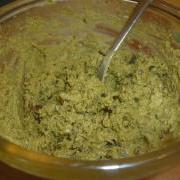Even amongst seasoned fans of seafood, winkles can be a final frontier when it comes to gathering molluscs for consumption. They do not score highly on appearance, or yield in relation to effort expended in gathering, cooking and extraction from the shell! The recipe below yields a tasty condiment which is not dissimilar to anchovy paste.
Collect a good bucket of edible winkles. As always when gathering molluscs from the shore, take care to choose an unpolluted beach which receives regular flushing with clean seawater. As the shellfish are cooked relatively lightly it is particularly important to be sure of the shore. Avoid collecting large individuals. You will also need some butter and salt:as a guideline use 120g of butter for 300g of winkles in their shells.
The best way to cook the winkles is to 'coddle' them. Scrub and rinse the shells. Place them in a layer only one, or at most two, shells deep in a pan or bowl. Pour on boiling, salted water about three times as deep as the shells (i.e. plenty of water in relation to the amount of shell, so that they heat up quickly. Leave for 10-15 minutes. Pour off the hot water, remove the meat from the shells with a bent pin and set aside.



If a blender is to hand, combine the winkle meat, softened butter and salt until you have a paste. (You may want to adjust the amount of salt you use so add it bit by bit.) Alternatively you can remove the muscle and use the brown coils from the inner shell and mash these by hand with the butter. Either method yields a tasty spread on toast or warm bread rolls. A great accompaniment to fish dishes.
Note: If you collect a relatively small number of winkles, then adjust the amount of butter you use accordingly. If you do make a large quantity, the winkle butter can be shaped into pats, or pressed into moulds (I have an ice cube tray with scallop shapes), and frozen to be used as and when.
(with acknowledgements to Bas Payne and Jacqui Wood)
